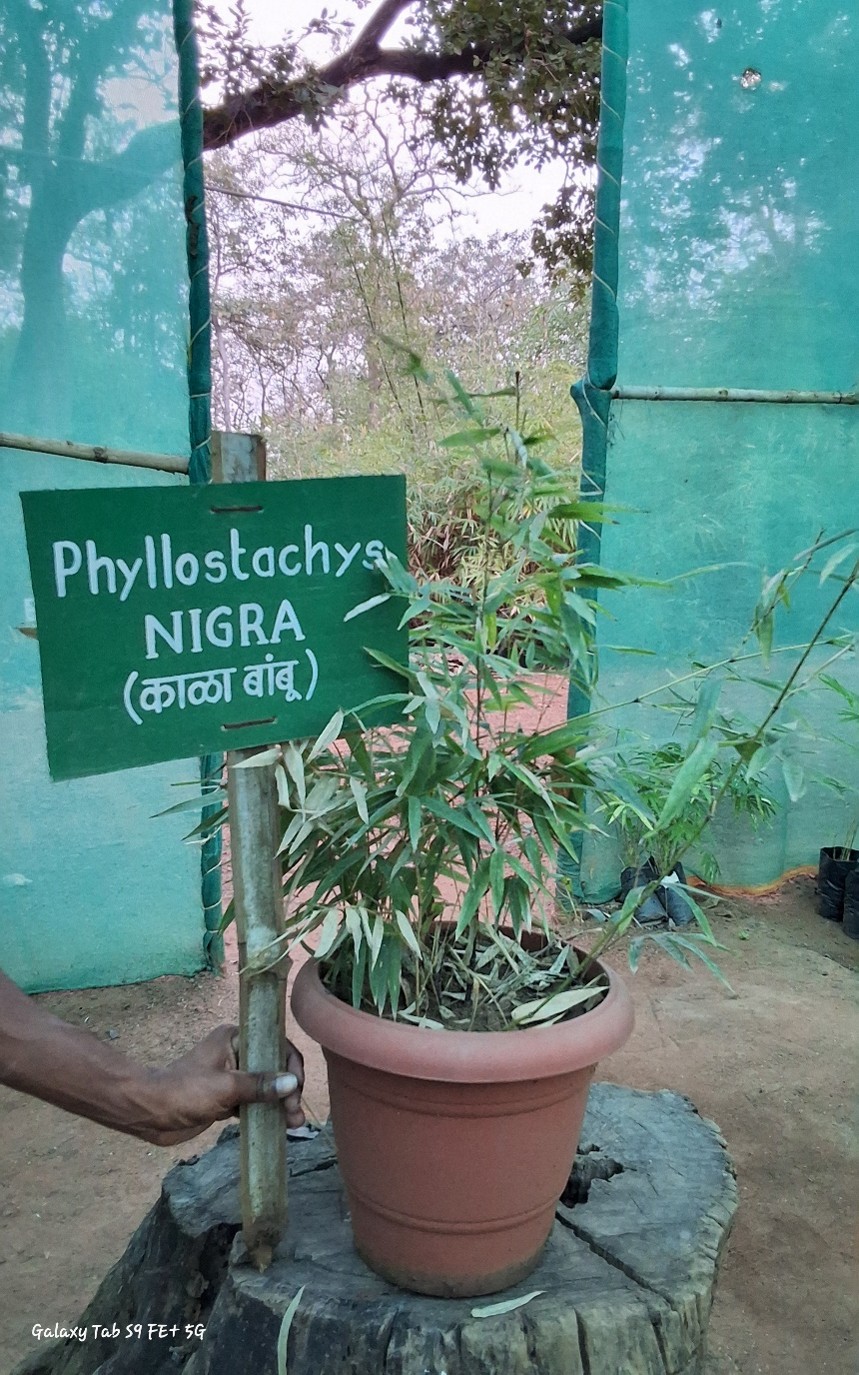Phyllostachys nigra

Phyllostachys nigra
Phyllostachys nigra commonly known as Black Bamboo in English,(Hēizhú) in Chinese, and (Kurotake) in Japanese, is referred to as Kala Bans in Hindi and Karuppu Tharuvai in Tamil. It is native to China, Japan, and parts of Southeast Asia, thriving in temperate to subtropical climates. This species has also been introduced to Europe, North America, and parts of Australia for ornamental purposes.
The bamboo has a clumping habit and grows vigorously, reaching a height of 4 to 7 meters with a culm diameter of 2 to 4 cm. The culms are initially green, turning black with age, typically within 2-3 years. The internode length ranges from 20 to 30 cm, and the culm sheath starts off green when young but becomes deciduous over time. The adaxial surface of the culms is smooth and glabrous, while the abaxial surface is lightly pubescent, with ciliate margins.
The leaves of Phyllostachys nigra are lanceolate, narrow, and pointed, measuring 7 to 12 cm in length and 1.5 to 3 cm in width. The texture of the leaves is glossy and soft, contributing to the plant's ornamental value.
The inflorescence consists of small panicles, typically sparse with a few spikelets. The flowering glumes are small, narrow, and lanceolate, while the stamens are 6 to 8, slightly exserted in the flowers. Flowering is infrequent, occurring once every 40 to 50 years in its natural habitat, with most flowering reports coming from mature stands in China.
The seeds of Phyllostachys nigra are small, light, and wind-dispersed. Seed germination is slow and irregular, often requiring stratification or specific environmental conditions for successful germination. Due to the rarity of flowering, propagation is most commonly done through culm cuttings, which root easily in moist soil, or by dividing mature clumps.
Phyllostachys nigra has a range of uses. It is highly valued as an ornamental bamboo for its unique black culms and is commonly used in gardens, parks, and landscapes. The bamboo is also suitable for lightweight construction, such as making furniture, flooring, and small structures. In addition, it is used for crafting baskets, utensils, and other bamboo products. Phyllostachys nigra is also effective in preventing soil erosion, especially in sloped areas and along riverbanks. On occasion, it is used in small-scale timber production due to the strength and durability of its wood.
In summary, Phyllostachys nigra is a versatile and attractive bamboo species, appreciated for its striking appearance, its practical applications in construction and crafting, and its contribution to erosion control and timber production.
Listen Audio:
Need assistance? BRTC Faculty